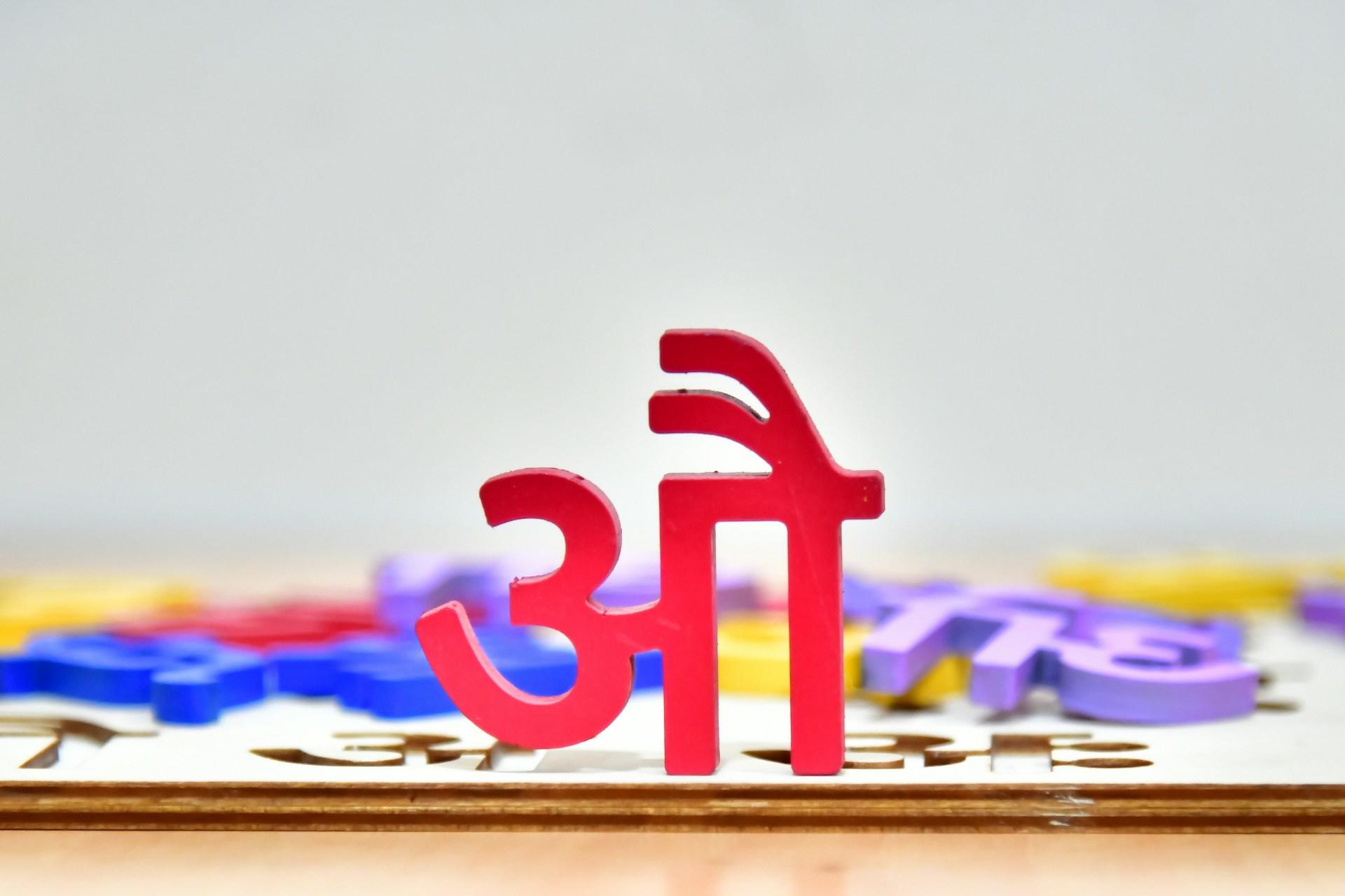When embarking on the journey of learning Hindi (or any language, for that matter), mastering the correct pronunciation of words is not just a task, but a crucial part of effective communication. While it's true that Hindi has a variety of sounds (or phonemes) that can be challenging for English speakers, the reward for mastering them is immense. It will not only make you sound more authentic when you speak but also significantly enhance your ability to be understood by others.
Learning Hindi pronunciation may initially feel daunting, but if you practice and use the right tools, you'll master it. This guide will review the essentials of Hindi pronunciation, common mistakes to avoid, and vowel and consonant rules.
Key Takeaways
- Hindi is written using the Devanagari script, with each letter corresponding to a specific sound.
- Pronunciation is an essential part of being understood and avoiding confusion between similar-sounding words.
- Hindi uses vowel and consonant pairs, including aspirated and retroflex sounds that English speakers will likely be unfamiliar with.

How to Pronounce the Hindi Alphabet
To understand how to pronounce Hindi words, let's start with the basics: the Hindi Alphabet.
Written in the Devanagari script, Hindi technically uses an alphasyllabary, not an alphabet. This means that vowels and consonants are combined in syllabic units.

Unlike English, which uses an alphabet where each letter is distinct, Hindi forms the base with consonants and vowels added as diacritics or full characters.
Mastering this writing system (not an alphabet, as we explained) is the first step to learning how to pronounce Hindi correctly. Unlike in English, where letters can sometimes be pronounced differently, Hindi is read exactly as it's written.
Knowing the sounds of each letter in Hindi, you can pronounce any word in Hindi once you read it.
Learning Hindi Pronunciation: Vowels and Consonants in Hindi
Now that you have a basic understanding of how Hindi pronunciation works let's look specifically at how the different sounds are made and represented in writing.
When learning Hindi, or any other language, remember that pronunciations are approximate unless we use the international phonetic alphabet (IPA).

Pronouncing Hindi Vowels
In Hindi, vowels are classified as either short or long pairs. They differ from English vowels as they're usually articulated further back in your throat.
Here are the vowels in Hindi:
| Transliteration from the Devanagari alphabet: short vowel | Sounds like English | Transliteration from the Devanagari alphabet: long vowel | Sounds like English |
|---|---|---|---|
| a | alive | ā | hard |
| e | energy | ||
| i | history | ī | keep |
| u | put | ū | mood |
| o | home, but shorter | au | hot |
Vowels in Hindi can also be nasalized, usually indicated by a dot or another mark when transliterated into the Latin alphabet. You must recognize this, too, as it can change the meaning of words.
Practice the Hindi vowels with this video.
Hindi Vowel Sounds for English Speakers
Most of these vowels are similar to those you'll use in English. For these examples, we've used the closest English equivalent, which will also depend on your own accent or dialect in English.
- अ (a): Pronounced like "a" in "alone" or "u" in "bud."
- आ (aa): Like the "a" in "far" or "bark."
- इ (i): Similar to "i" in "fit" or "pick."
- ई (ii): Like the "ee" in "seep" or "lean."
- उ (u): Sounds like "u" in "full" or "oo" in "book."
- ऊ (uu): Similar to "oo" in "fool" or "you."
Practice makes perfect, so take your time practicing these and listening to examples from native Hindi speakers.
Pronouncing Hindi Consonants
Hindi consonants also come in pairs. However, these are classified as either aspirated or unaspirated consonants, as well as retroflex and dental consonants.
Aspirated consonants have an extra breath of air when you pronounce them, while unspirated consonants don't.
Retroflex consonants are pronounced by curling your tongue back toward the roof of your mouth.
Dental consonants, as the name indicates, are formed by placing your tongue against your teeth.
| Transliteration from the Devanagari alphabet | Approximate English sound |
|---|---|
| K | skin |
| Q | more in the back of the throat than k |
| Kh | k aspirated as in the Scottish “loch” |
| G | gift |
| ǥ | deeper in the throat |
| gh | as in doghouse |
| c | as in the start of "chop", but position your tongue as for a “t” |
| j | job |
| jh | aspirated form of “j” |
| z | zoo |
| ț | pronounce the English “t”, but as much at the tip of the tongue |
| țh | aspirated ț |
| d | pronounce the English “d” but let your tongue make a little dip in the middle while pressing it against your palate |
| dh | aspirated d |
| ŗ | is slightly trilled, but not as much as a an Italian “r” |
| ŗh | aspirated r |
| ņ | is pronounced slightly further forward in the mouth than the English (closer, but not quite against the teeth) |
| t soft | as in “soft” |
| d soft | as in “breadth” |
| n | as in “anthology” |
| p | champ |
| ph | an even more aspirated version than in “pin” |
| b | bun |
| bh | aspirated b |
| m | moon |
| y | yes |
| r | as in “roll” but ever so slightly trilled |
| v | somewhere between an English “v” and “w” |
| l | instead of pushing off the palate, push the sides of your tongue against your teeth |
| ś | as in “ship” |
| s | sip |
| h | help |
Your first mission when learning to master Hindi pronunciation will be understanding the differences between these classifications.
Here's a nice and clear video for the consonants in Hindi.
Consonant Sounds: Retroflex and Dental Consonants
There are plenty of consonant sounds in Hindi that are similar to English, but there are also plenty of completely new ones that you'll have to learn and approximate to the best of your ability.
- क (k): Same as "k" in "king."
- ग (g): Like "g" in "great."
- च (ch): Similar to "ch" in "cherry."
- ज (j): Like "j" in "juice."
- ट (T): A retroflex sound unique to Hindi, pronounced with the tongue curled back.
- त (t): A softer dental "t," pronounced with the tongue touching the teeth.
The aspirated consonants, like थ (th), need to be pronounced with a burst of air. This is tricky and another aspect of Hindi pronunciation that you must practice.
Common Mistakes in Hindi Pronunciation
The sounds of Hindi consonants and vowels are difficult for native English speakers, so don't worry if you make mistakes.
That said, these are some common mistakes to avoid so you make them less regularly.
- For instance, the hard "t" sound in Hindi is often confused with the softer retroflex "T", which is more like the English "t" sound. Getting these two confused can lead to misunderstandings.
- “G” and “Gh”. The aspirated “gh” sound doesn't exist in English so English speakers tend to struggle to make the sound when speaking Hindi. Consider taking some extra time to practice this.
- "S" and "s": These sounds in Hindi can be difficult. The "s" is more like what you'd hear in English, while the retroflex "S" sound is worth practicing.
- “D” and “DH: If you mispronounce the unaspirated “D” and aspirated “DH” sounds, the meaning of words can change. Try to avoid it.
- Nasalization: As mentioned above, you may say something unintentionally if you don't pronounce nasalized words correctly.
Before you move on to other Hindi pronunciations, we'd recommend mastering these common pitfalls first.
for a native English speaker to learn Hindi!
Transliteration and Hindi Pronunciation
In the previous examples, we used the characters from the Devanagari script. However, you can also use transliteration, the process of writing non-native writing systems in a speaker's own writing system.
In this case, the Devanagari script has been transliterated into the Latin alphabet as used in English.
For example:
- The "th" in "thus" is transliterated as द (D) in Hindi.
- The "th" in "think" is written as थ (TH) in Hindi.
Transliteration is undoubtedly a helpful shortcut for those completely new to Hindi. Still, you have to remember that these are always approximated. Learning the sounds (or phonemes) and reading and writing using Devanagari script is better.
This will result in better pronunciation.
Transliteration is simply a way to represent words from one script (like Devanagari script) in another (like the Latin alphabet).
Do not use transliterated Hindi; instead, learn Devanagari script!

Homonyms and the Importance of Tone in Hindi
Hindi features many almost identical words, except for one slight change in pronunciation, which makes pronunciation even more critical.
Mispronouncing a letter or improper nasalization can completely change the meaning of a word.
For example:
- जूठा (juuthaa): Means "leftover."
- झूठा (jhuuthaa): Means "liar."
Or:
- बाग़ (baag): Means "garden."
- बाघ (baagh): Means "tiger."
Why Correct Hindi Pronunciation Is so Important
In the above examples, context will likely do much of the heavy lifting, but that doesn't mean that every mispronunciation is benign.
Pronunciation is just a matter of getting the sounds right. You have to make yourself understood to avoid embarrassing mistakes.
Correct pronunciation not only helps communication but also shows respect for the language itself. The Hindi language isn't English, and it should not be pronounced as if it were. Making an effort to correctly pronounce Hindi will likely impress native speakers, too, and help you to start having conversations in Hindi more quickly.
When studying Hindi or any language, you can look for resources like books and apps to better understand the alphabet, writing systems, and pronunciation.

There are plenty of online platforms like Amazon where you can buy books on Hindi or learn more about Sanskrit, Prakrit, and Hindustani, which can help with understanding Hindi letters.
Practice Hindi Pronunciation with Native Speakers
Speaking of native speakers, these are the best people with whom to practice the Hindi language. Even if they're not teachers, listening to and speaking with native Hindi speakers will help you improve pronunciation.
Luckily for you, there are plenty of opportunities to speak Hindi with native speakers.
Many apps and platforms, such as HelloTalk or Tandem, can connect you with native Hindi speakers.
Hiring a native Hindi private tutor will give you plenty of opportunities to practice pronunciation.
The best way to regularly speak Hindi or hear native Hindi pronunciation is through immersion.
Try to live your life as fully in Hindi as possible. If you can't move to a Hindi-speaking region, you can always watch Bollywood movies, listen to Hindi radio, or enjoy Hindi-language music.

Learn Hindi with Superprof
If private Hindi tutoring sounds like the right choice for you and your goal of mastering Hindi pronunciation, you've come to the right place.
You can find talented and experienced native Hindi tutors on the Superprof website. Whether you're a beginner or have already started your language-learning journey, the private Hindi tutors on Superprof are ready to help you.
These tutors can tailor every session to you and what you want to learn, emphasizing proper Hindi pronunciation and learning the Hindi alphabet (the Devanagari script) if that's what you'd like to start with.
Of course, they can advise you on the best steps to take according to your level and language goals.
Many tutors offer the first session for free, so you can try a few Hindi tutors before choosing the one who's right for you.















I have to pronounce Hindi letters
Hello Sajeevana, thank you for your comment! I hope that our article helped you with your pronunciation. If you would like further assistance reach out to our team of expert tutors at Superprof.com.